Information about Egypt’s Ancient History can be gotten from various sources. However, some of the information about ancient Egypt contained in this article are from objects, monuments, and recovered artifacts from archeological sites.
A Brief History of Ancient Egypt
The Egypt of the ancient world used to be a vast kingdom. Its power spread across North Africa and some areas of the Levant after it was unified around 3100 BCE. Egypt was for a long time a foremost cultural and economic influence until it was conquered by the Macedonians in 332 BCE.
One of the popular names for Egypt in ancient times was “Kernet.” Kernet means the “black land.” The rulers of ancient Egypt are today referred to as “Pharaohs”. Parts of the territory ancient Egypt ruled are modern-day Palestine, Israel, Syria, Lebanon, Cyprus, and Sudan.
However, ancient Egypt was also occupied at some points in time by other powers like the Nubians, Persians, Romans, and Greeks. Widespread Egyptian settlement began in 6000 BCE. It is thought that the Sahara Desert expanded around this time which resulted in a slight shift of the earth’s tilting.
This expansion forced humans to the Nile River looking for a reliable source of water. There was the regular annual flooding of the Nile River causing ancient Egyptians to set three seasons: the Harvest, Growth, and flooding or Inundation. This flooding became important, influencing agriculture production as new layers of soil-rich nutrients were deposited every year.
The soil’s nutrient level became depleted whenever it does not flood. Irrigation practices and projects to improve agricultural production were embarked on. The construction of major projects became easy as the powerful elites and rulers could coordinate labor and resources.
These powerful and wealthy individuals began building the large tombs which represented the divide between the commoners and the elite in ancient Egyptian societies.
The Gods
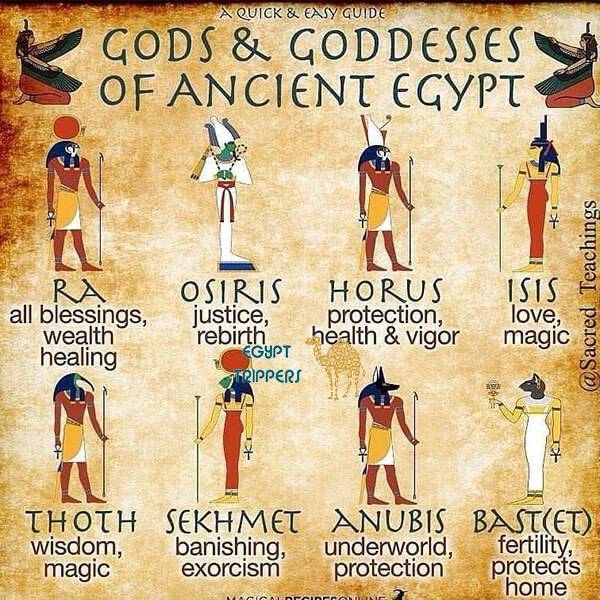
The Egyptian culture was defined by religious beliefs from its Predynastic Period (6000-3150 BCE). The belief in gods was the basis upon which Egyptian astronomy, medicine, art, government, and literature were formed. Pharaohs were revered as earthly gods, and their burial tombs were the great pyramids.
Medical practices of ancient Egypt contained magical utterances as diseases, (or a curse) was credited to be from the gods. Justice also was thought about in terms of religion: regarded as a thing the creator-god bestowed upon humans.
One creation myth of the ancient Egyptians tells of Atum, the god that created everything just by spoken words. It is seen in the earliest times in the history of Egypt that the gods were an integral part of their everyday lives. The god of the underworld, Osiris was also one of the most important.
Another cult figure that was important to Osiris was Abydos who numerous shrines and temples were constructed in his honor. Ancient Egyptians believed in the underworld, and it was important to navigate through it. To help in the afterlife, it was often that figurines, also known as Shabti were buried with the dead.
Sometimes, the deceased were mummified and buried with magic that aided their navigation of the underworld. The burials were so elaborate that only the important and wealthy could be considered for it.
Egyptian Writings
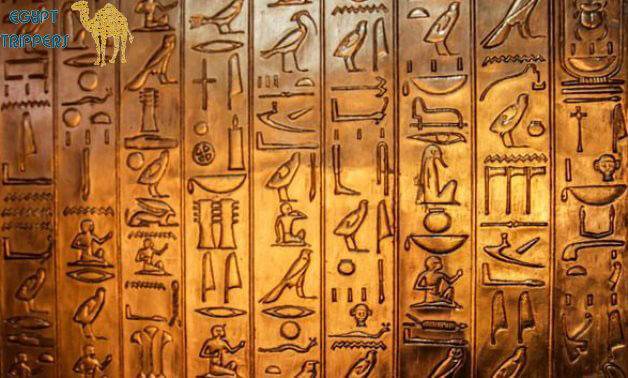
Egypt’s earliest inscriptions were in hieroglyphic scripts and it dates back about 5,200 years. Hieroglyphic was a form of writing that expressed meanings and sounds using images. Over millennia, the Egyptian language changed, with the surviving writings sub-divided into categories like “Late Egyptian,” “Middle Egyptian,” and “Old Egyptian.”
It was not until the Middle Egyptians that they began writing literature. However, the language widely used during the time ancient Egypt was conquered by Alexander the Great was Greek. Coptic was also widely used after the spread of Christianity across Egypt. Coptic is an Egyptian language that makes use of the Greek alphabet.
The use of Coptic and Greek grew, leading to the decline and extinction of hieroglyphic writing sometime around the 5th century AD. Arabic, the language that is widely used in modern Egypt spread in AD. 641. Some writings were preserved on papyrus, clay or sand. There are just a few surviving papyrus documents due to Egypt’s dry and hot climate.
Predynastic Period (5000-3100 BCE)
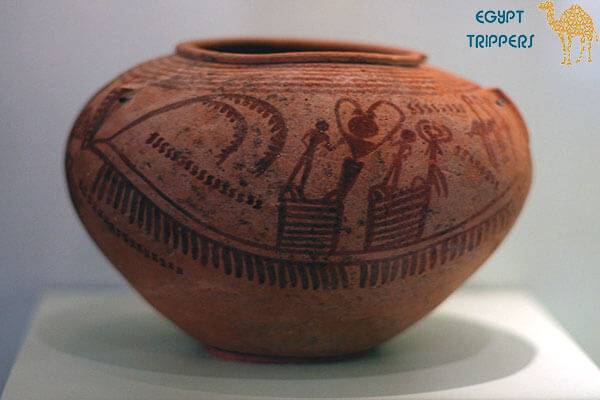
The Predynastic Period of Egypt encompassed more than 2000 years of the development of the country’s civilization. The artifacts and records found from the Predynastic period are few. The advances made by Neolithic communities in the northeastern part of Africa paved the way for Egypt’s religion and politics, technology, crafts, and arts.
Two separate kingdoms the white land in the south and the red land in the north were established in 3400 BCE near the Fertile Crescent. Around 3200 BCE, “Scorpion,” a southern king made the first attempts to conquer the kingdoms in the north. However, the first dynasty’s first king, King Menes (also known as Manes or Meni) overcame the north a century later and unified the country while establishing its capital at Memphis.
Archaic Period (3100-2700 BCE)
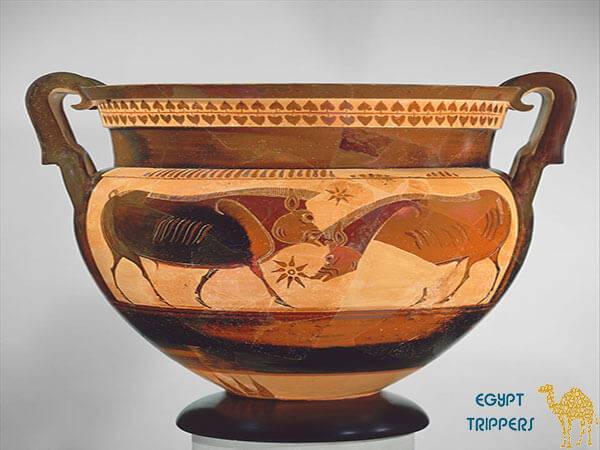
Founded by King Menes, Memphis, formerly known as White Walls became the capital of ancient Egypt. This capital in the north, close to the highest point of the Nile River delta would grow to be a great city. The Egyptian society in the period of the Old Kingdom was also dominated by this metropolis.
The all-important mythos of kingship developed during the Archaic Period. This was part of the foundational developments of Egyptian society. The king was godlike to the ancient Egyptians and was closely identified with Horus, the all-powerful god.
The hieroglyphic writings earliest known also date to the Archaic Period. The Archaic Period, just like the other periods had ancient Egyptians living in small villages as farmers. The economic state of Egypt was agriculture, majorly barley and wheat.
The much-needed fertilization and irrigation were provided by the yearly flooding of the Nile River. Farmers would sow the wheat after the receding of the flood and would harvest it before the season of drought and high temperature returned.
Old Kingdom Egypt (2700-2200 BCE)
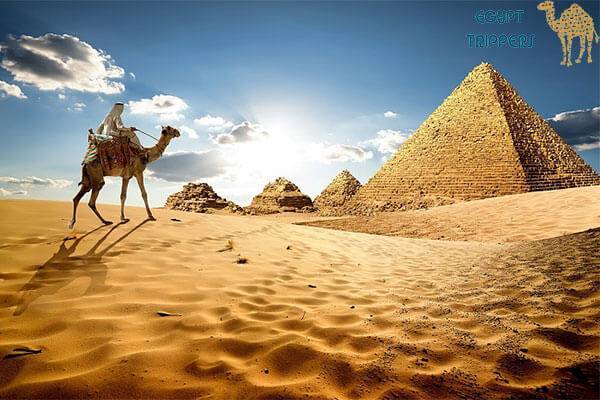
During the period of Old Kingdom Egypt, the state was largely unified. It expanded militarily and the old kingdom Egypt gained complexity during this period. During this period also, the rulers of the Old Kingdom honored the gods using magnificent architectural structures.
Some famous Egyptian monuments such as the Pyramids of Giza and the Great Sphinx of Giza were first constructed during the Old Kingdon Egypt. These structures were both monuments and tombs the great rulers of who had built them. Saqqara’s First Step Pyramid was built by King Djoser in 2670 BCE, his physician and chief architect Imhotep (2667-2600 BCE) designed it.
Imhotep also wrote one of the earliest medical notes. He argued that diseases are caused not by the will of the gods but could rather be of a natural cause. The last of the ancient world’s seven wonders, the Great Pyramid of Khufu was constructed 2589-2566 BCE, Pyramids of Khafre, 2558–2532 BCE, followed by Menkaure, 2532-2503 BCE.
Contrary to belief, the builders of the pyramids were peasants and not slaves. These peasants worked side by side with priests, mathematicians, and stone cutters on the pyramid’s construction during the off-season. It was required that each household provide one worker for these projects: the provision they made was a form of taxation.
On the other hand, the wealthy could pay for someone to take their place. This period also saw the construction of ships for the trading of goods important to the projects. Some of the goods traded were Lebanese cedar, copper, gold, incense, and ebony.
Middle Kingdom Egypt (2000-1700 BCE)
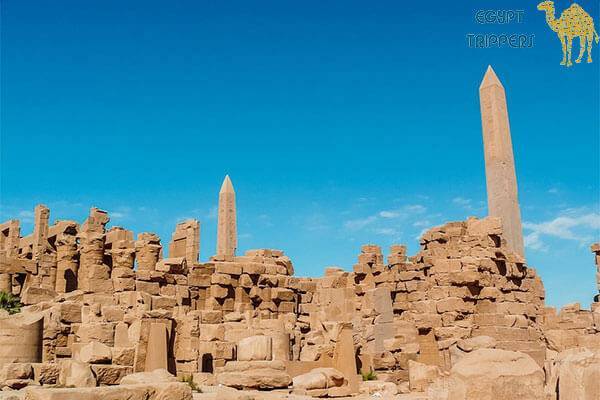
Egypt was again unified during the middle kingdom. Ancient Egyptian rulers discovered means of taking power back from regional governors. Onwards from the Middle Kingdom of Egypt, kings often kept strong standing armies. The Egyptian state gained a large number of resources because of its ability to build fortifications, therefore maintaining a long-standing military force.
However, there was the Second Intermediate Period (1800-1570 BCE) in between due to the political fragmentation in Egypt. Hyksos came along around 1650 BCE to take advantage of this political instability. The Hyksos were not native to Egypt. They were thought to be Semitic people since the language they spoke originated in the Middle East.
Although the Hyksos imposed their political leaders, they still brought many technological and cultural innovations to Egypt. Some of their innovations included warfare’s fortification technique, battle axes, the composite bow, horse and chariot, new species of crops and animals, as well as pottery techniques and bronze working.
New Kingdom Egypt (1550-1077 BCE)
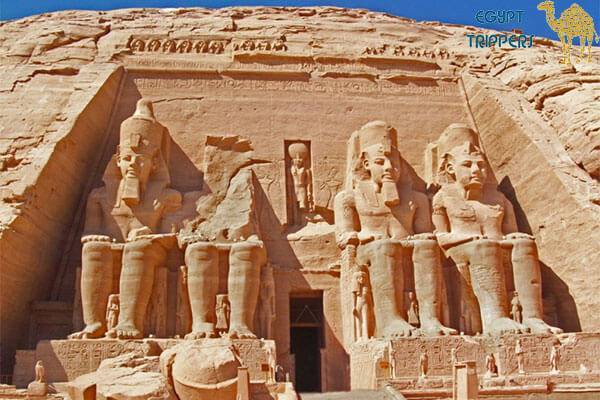
The period of the New Kingdom Egypt began around 1550 BCE. This period of Egyptian history started with Hyksos expulsion from Egypt. It was immediately that the centralized political was restored. Egypt was at its peak of power, and this period marked its most successful time.
During this period, one of the most famous rulers of Egypt, Hatshepsut established trade networks that help to build Egypt’s wealth. She commissioned the construction of the Deir el-Bahri (a mortuary temple), as well as hundreds of pieces of statuary and other projects. During her reign, temples that were damaged or neglected during the period Hyksos ruled were repaired.
Thutmose III, Hatshepsut’s successor continued with her policies, and Egypt was a powerful and great nation by the time of his death in 1425 BCE. Tutankhamun, Egypt’s most recognizable ruler reigned from 1336-1327 BCE. Tutankhamun moved the capital to Thebes and also restored the ancient temples.
However, the New Kingdom Egypt’s greatest ruler was Ramesses II (1186-1155 BCE). The building projects he embarked on were the most elaborate of any ruler in Egypt. His reign was efficient as he had at his disposal the means to do so. Ramesses II considered Egypt victorious in the Battle of Kadesh. His public works reflect how he celebrated himself as a god.
The Monarchs before New Kingdom Egypt were known as kings, but the title was changed to pharaoh during this period. Either greatly enhanced or built during this period were great monuments of Egyptian architecture such as the tombs of the Valley of Queens and the Valley of Kings, the temples of Luxor and Karnak, Abu Simbel, and Ramesseum.
Post-Empire Egypt (1085-332 BCE)

The Sea Peoples began getting attracted to the great wealth of Egypt during the reign of Ramesses III (1186-1151 BCE). Just like the Hyksos, the origins of the Sea Peoples are unknown. However, they are thought to have originated from an area in the southern Aegean.
The Sea Peoples became a threat to Egyptian security between 1276-1178 BCE. Ramesses II earlier in his reign had defeated them in a naval battle, so did his successor Merenptah (1213-1203 BCE). They increased their effort after the death of Merenptah, ravaging the coast and sacking Kadesh.
However, they were finally defeated by Ramesses III at the battle of Xois 1178 BCE. The successors of Ramesses III increasingly met with resistance from most especially the priestly class as they tried to maintain his policies. People of the conquered territories and those in Egypt also rebelled.
The Egyptian government by the end of the 20th dynasty, during the reign of Ramesses XI (1107-1077 BCE) had become much weakened. The corruption and power of the clergy once again caused the collapse of the central administration. This time of collapse is otherwise known as the Third Intermediate Period.
Third Intermediate Period (1069-664 BCE)

During the third intermediate period, official corruption, civil unrest, famine, increased droughts, and the cost of war ultimately led to the fragmentation of Egypt to a collection of states that were governed locally.
A military force from the Nubian Kingdom of Kush took advantage of the political instability that conquered and united Kush, Upper Egypt, and Lower Egypt. However, the Assyrians drove out the Hushites out of Egypt in 670 BCE and established a client state. Egypt broke away from the control of the Assyrians and was reunited again in 656 BCE.
There was a period of prosperity and peace until the Persian King Cambyses defeated the rulers of Egypt in 525 BCE. He took for himself the title of Pharaoh together with his as the King of Persia.
To Wrap Up
Egypt, known as the world’s oldest civilization has flourished since the predynastic period. While its borders, religion, climate, writing, and civilization rulers have changed with time, modern-day Egypt still exists with its ancient monuments and artifacts.


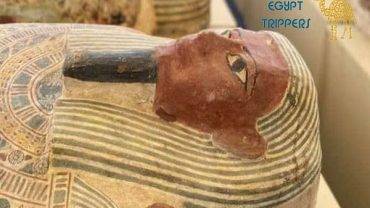
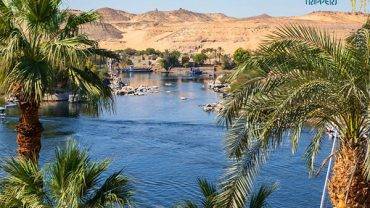
Comment (0)